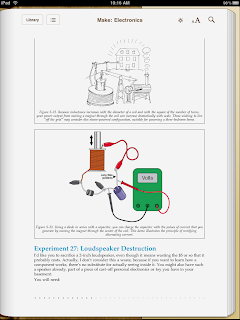Just an FYI - maybe save some of you some time...
I priced out the components for Exercise 34 on both Sparkfun.com and phanderson.com - summaries below. The advancedmicrocircuits.com website didn't seem to have the 3.5mm stereo socket (Figure 5-126) and their search feature just plain stinks... took me a few minutes to find the USB cable but had to search for 'picaxe usb' to locate it...
Total costs, with shipping are:
Sparkfun.com - $40.89 - this price is for 2x of the 08M chip, 1x of the USB cable, and 1x of the stereo socket adapter.
Phanderson.com - $38.35 - your price may differ as they use your zip code to estimate shipping costs... but this order comes with 3x of the 08m chip, 1x of USB cable, and 1x of stereo socket adapter.
I placed my order with phanderson.com today. I probably should have checked mouser.com and others, so if any readers do so, please share your findings - thanks!
I priced out the components for Exercise 34 on both Sparkfun.com and phanderson.com - summaries below. The advancedmicrocircuits.com website didn't seem to have the 3.5mm stereo socket (Figure 5-126) and their search feature just plain stinks... took me a few minutes to find the USB cable but had to search for 'picaxe usb' to locate it...
Total costs, with shipping are:
Sparkfun.com - $40.89 - this price is for 2x of the 08M chip, 1x of the USB cable, and 1x of the stereo socket adapter.
Phanderson.com - $38.35 - your price may differ as they use your zip code to estimate shipping costs... but this order comes with 3x of the 08m chip, 1x of USB cable, and 1x of stereo socket adapter.
I placed my order with phanderson.com today. I probably should have checked mouser.com and others, so if any readers do so, please share your findings - thanks!
























































